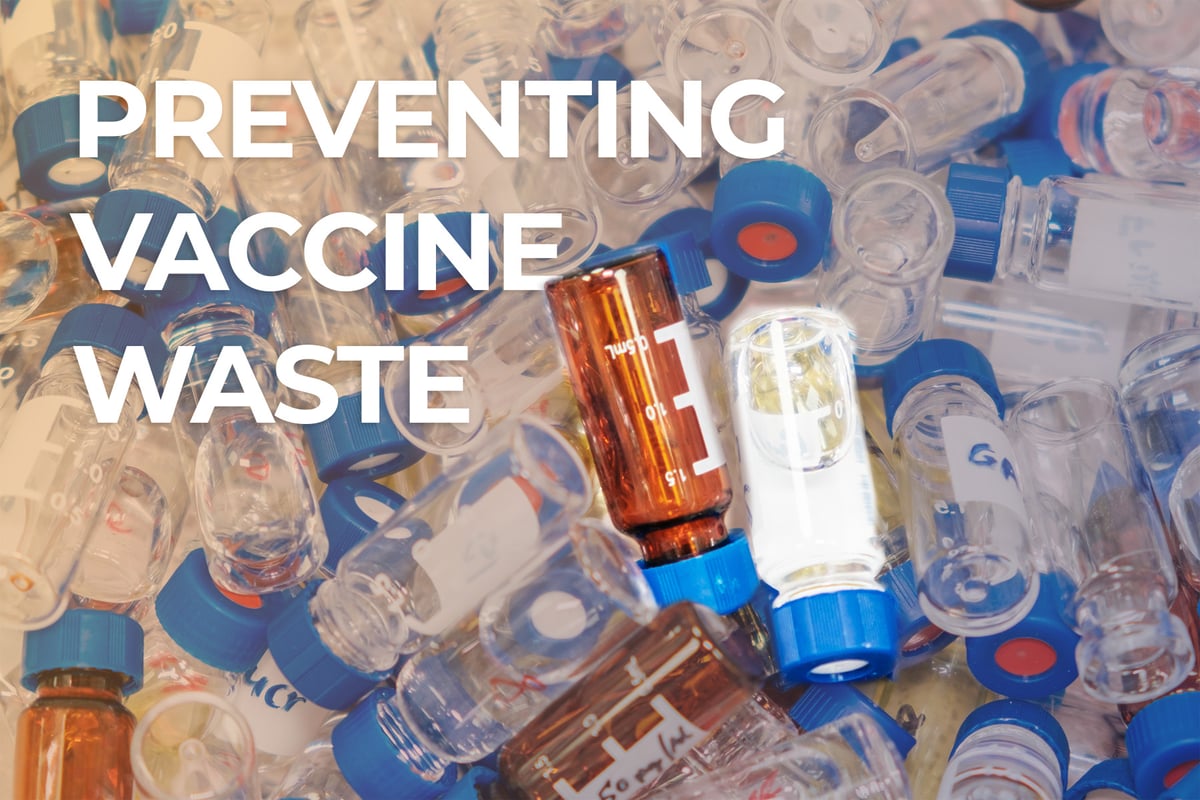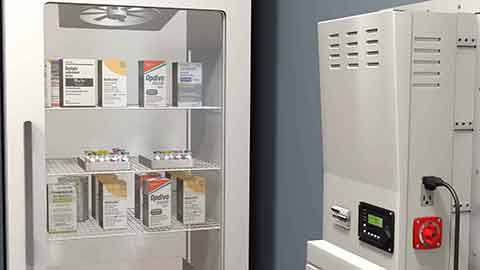Preventing Vaccine Waste For Immunization Programs

Vaccine wasted during deployment in an immunization program is not a new thing and is always detrimental to public health outreach. However, it is an expected aspect of any immunization program and one that manufacturers typically take into account when producing the vaccines.
However, expecting a degree of waste is not a license to let vaccines go to waste. Therefore, it is essential to understand the factors that contribute to vaccines wasted in an immunization program and leverage this understanding to bring the waste level to an acceptable minimum.
This article discusses wasted vaccines and the issues around them, such as the factors responsible for the waste and the tools available for reducing it.
What Is Vaccine Wastage?
We usually define wastage as a loss occasioned by use, decay, erosion, leakage, or sheer wastefulness. This definition holds regarding vaccine wastage, as it is considered with respect to vaccine usage. Thus, we can define vaccine wastage as the number of vaccines discarded during vaccine deployment in an immunization program.
Vaccine wastage is the opposite of vaccine usage, and it is calculated using the following formula:
Vaccine wastage rate = 100 - vaccine usage rate
Wastage can happen at multiple stages of the deployment process, in both opened and unopened vials and oral admission. Because vaccine wastage is a typically expected part of the vaccine deployment process, manufacturers factor it into production.
Vaccines Wasted: A COVID-19 Case Study
The global effort since 2020 to deliver covid-19 vaccine doses has seen more than its fair share of waste. Reports show that anywhere from 15 to 82 million COVID-19 vaccine doses were wasted between March and September 2021. This information was self-reported by pharmacies, states, and other vaccine providers and collated by the world health organization and CDC.
However, some states and federal providers did not include their data, and those that reported did not explain why they had to waste their vaccine stock. However, physician complaints about the difficulty in fully utilizing multidose vials may have played role.
Types Of Vaccine Wastage
We can classify vaccine wastage by its underlying cause into system-related and program-related.
System-related wastage typically refers to unopened vaccine vials, while program-related wastage refers to opened vials.
However, this method of classifying vaccine wastage is sometimes seen as inaccurate, as it does not consider other factors.
A better organizational method is those occurring in unopened vials and open vials.
Vaccine Wastage In Unopened Vials
Vaccine wastage in unopened vials can be commonly attributed to:
- Expiration
- Vaccine Vial Monitor (VVM) indicator
- Temperature Excursions
- Breakage
- Theft
- Discarding unused vaccine vials returned from an outreach
Vaccine Wastage In Opened Vials
Vaccine wastage in opened vials occurs because of the following reasons:
- The number of doses drawn from the vial is not the same as that indicated on the label
- Poor reconstitution practices
- Submerging opened vials in water
- Discarding doses remaining in an opened vial at the end of a session
- Patient reaction to vaccine requiring more than one dose
Vaccine Storage with Respect to Wastage
When you have expired, heat-damaged, frozen vials, or vials with VVMs beyond the discard point, do not keep them asthey may be confused with those containing vaccines of good quality.
If you have to keep unusable vaccines for a period before disposal, such as until you have completed accounting or auditing procedures, keep them outside the cold chain, separated from all usable stocks. In addition, clearly label them as “Damaged/expired vaccine - do not use” to avoid mistaken use.
Furthermore, your stock records should only contain vaccine stocks that are fit for use. Ensure that you do not include damaged or expired vaccines in your available stock balances.
Keeping The Level Of Vaccine Wasted To A Minimum
Let us face it. Even though manufacturers factor vaccine waste into production, it can still be a difficult notion to accept, especially with vaccines like the COVID-19 vaccine.. According to Terry Fulmer, John A. Hartford Foundation president, "Even one vaccine dose wasted is one dose too many."
The following are a few ways facilities have worked to keep their level of vaccine wasted to a minimum, which you can adapt for your facility as well.
- One facility removes enough vaccines to cover the first three hours' worth of booked patients and then prepares smaller batches every hour to ensure they do not take too much out.
- Another facility keeps the number of vials they estimate they will need in a day in a medical-grade refrigerator, (usually enough for 1,000 - 1,500 doses of the Moderna and Pfizer vaccines in the case of COVID-19)
- The staff of another facility assembles 100 doses to cover the first couple of hours and then draws about 50, then 20. Then, to cover the last two hours before closing to the public at 4 p.m., they bring out one vial at a time as needed.
Tips for Preventing Vaccine Loss due to Power Outages
While the importance of temperature monitoring cannot be understated, once the power goes out, the clock starts and temperatures begin to rise.
Battery backup systems offer instant and automatic power for both medical equipment and laboratory appliances alike. As a result, no staff needs to be on-site to keep track of or start the generator, plus, valuable samples and inventory will remain safe—with no extra work required.
Additionally, their vertical, cabinet-like design and leak-proof batteries mean they can be installed in even the tightest spaces and oriented in anyway to make them fit. Meaning now matter how crowded your vaccine or sample room is, you can ensure you'll be protected.
Plus, if your lab or storage room is truly tight on space, a hardwired backup power unit can instantly supply remote power to your appliance—directly via the outlet its already plugged into.
Regardless of what kind of system is the best fit, they ensure that your entire stock of medicinal and organic samples are protected from a sudden loss of power (and the resulting temperature fluctuations) by guaranteeing a seamless transition from utility power to backup power.
Even better, is that battery generators can be outfitted with as much power as you want. So system’s can be designed with enough power to protect a facility’s inventory:
- Overnight
- All day
- Over a weekend
- Or even for a whole week.
So, to protect your facility from tens of thousands of dollars in lost inventory speak to a Medi-Products battery backup expert.
They’ll help design you a system that both meets your power needs and will fit inside your facility—for a much lower cost than what your vaccines are worth. So a backup power system pays for itself the first time your power goes out.
Designing a system for you is as easy as taking a picture of your appliance’s nameplate, and a photo of the room where it’s in.
Then, you just email both photos to our Product experts, and we’ll provide you with multiple options for backup power protection.
For more information contact: 1.800.7653237


